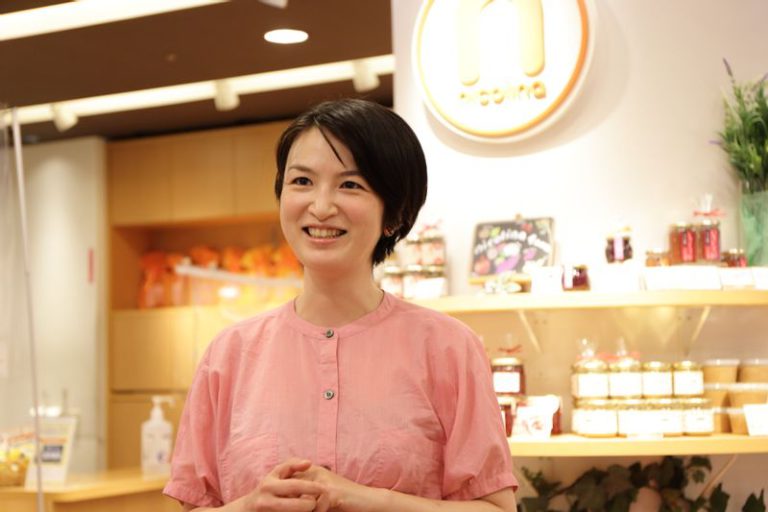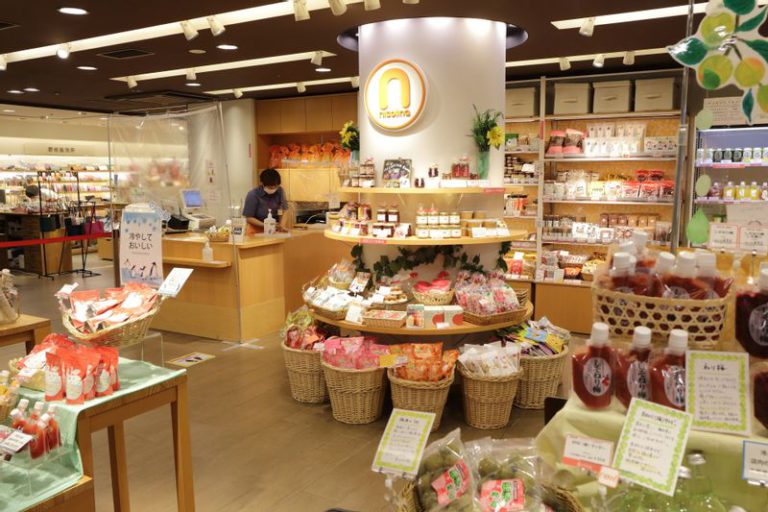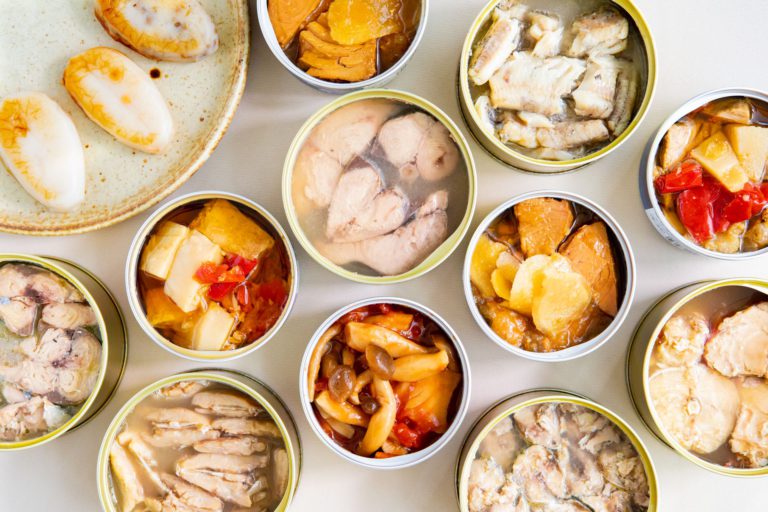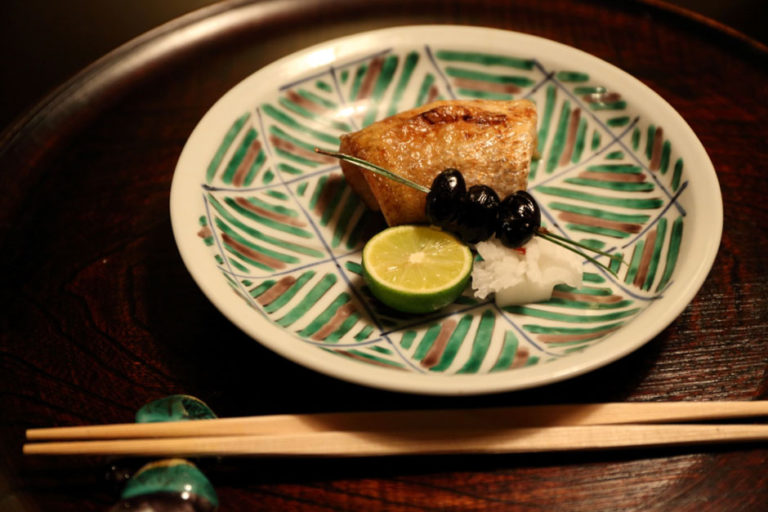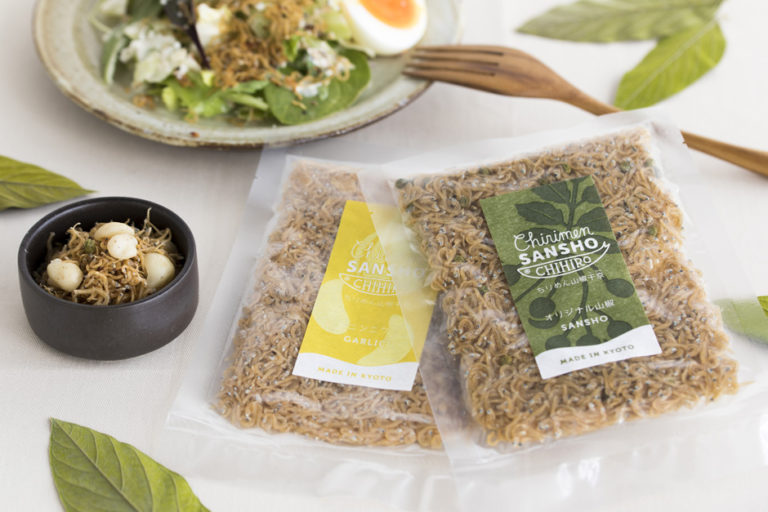Best Drinks That Make Summer Days Enjoyable
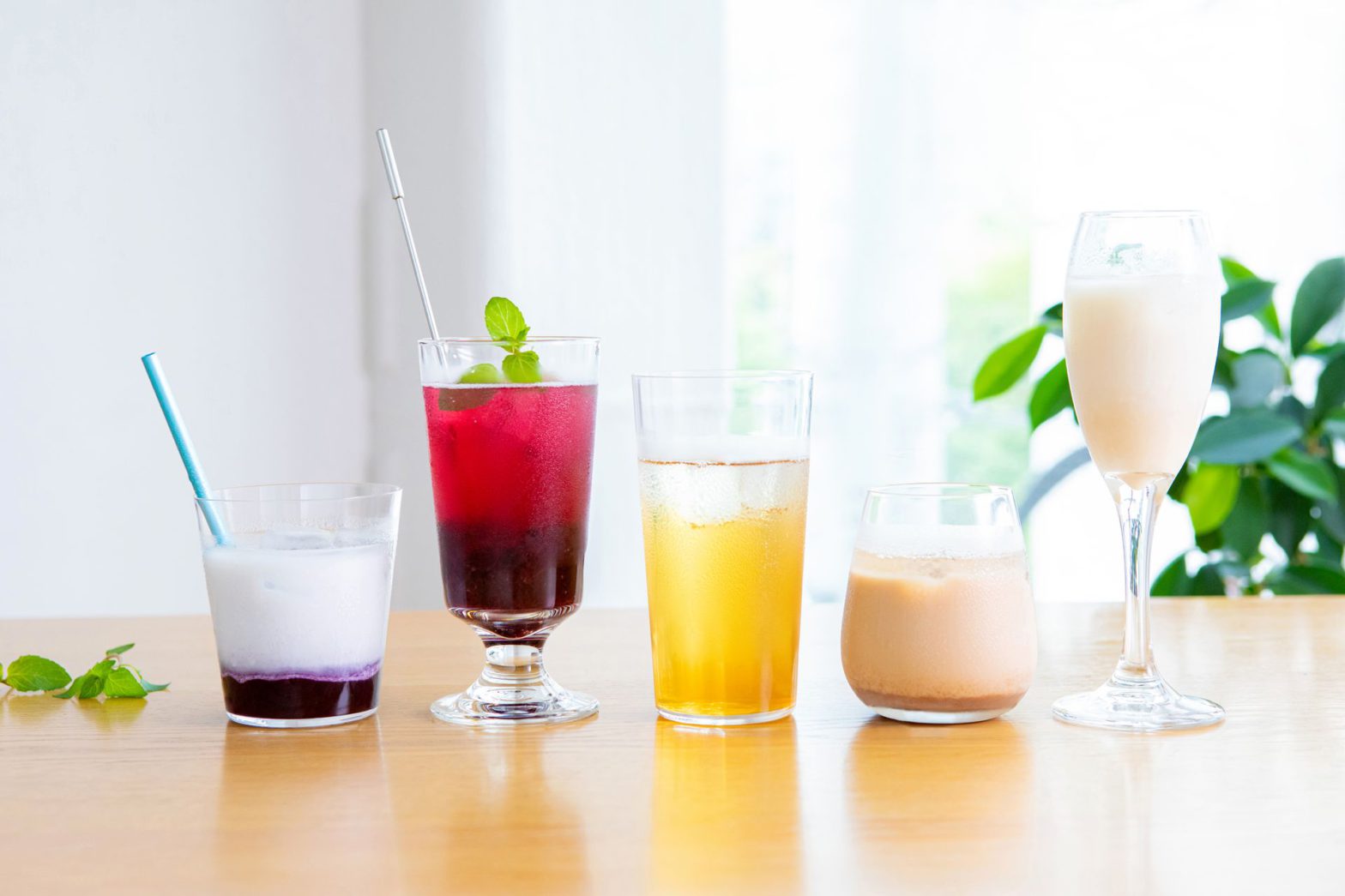
A place where attractive products from all over Japan assemble
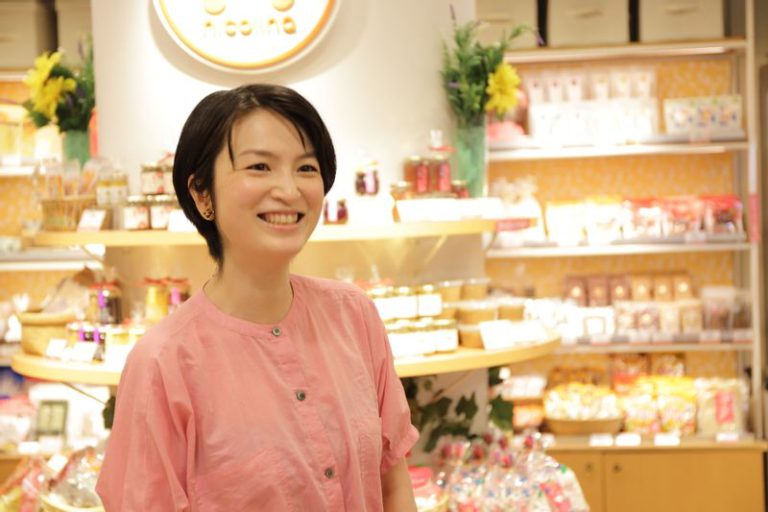
nicolina is a boutique in Tokyo Station selling delicious regional products from all over Japan. The shop is run by Ryohin Koubou, a food consulting and distributing company established in 1994 by Sayaka’s mother, Noriko. The company opened nicolina as its directly managed store in 2010 while being consulted by local producers about developing regional products and sales channels. Sayaka is nicolina’s first manager. Both mother and daughter have a deep love for regional products.
“We make it a rule to select products that look delicious and fun from the consumer’s perspective, and make the shop a place where customers can naturally enjoy regional specialties in their daily lives,” says Sayaka.
The nicolina store is packed with choice products from various regions selected by mother and daughter. We had them choose items that can be turned into perfect drinks for the summer for this issue.
Naturally sweet "Blueberry no Koto-Koto-Ni"
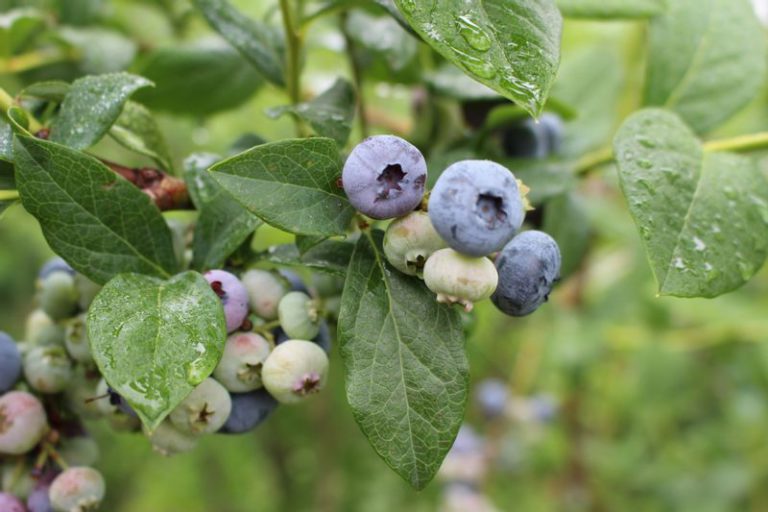
Gonshichien in Ninohe in the northern tip of inland Iwate Prefecture is a fruit farm that primarily grows apples along with blueberries, grapes, pears, and peaches. Since 60% of Ninohe is hilly, a chilly wind called “yamase” blows in, creating a significant difference in cold and warm temperatures. This extreme temperature difference nurtures the trees to produce sweet and high-quality fruits.
Blueberry no Koto-Koto-Ni, made only with blueberries from Gonshichien, is a sumptuous fruit sauce packed with the true flavor of the ingredient.
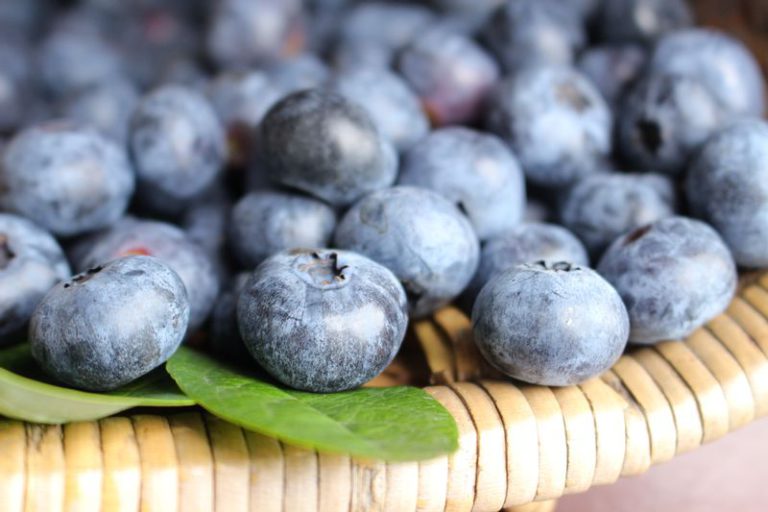
“Since blueberries taste the best when fresh, I wanted to make the most of the ingredient without adding sugar,” says the farmer, Takashi Nakasato.
Blueberries grown at Gonshichien are a small berry variety called Rubel, defined by its rich flavor. Early-picked blueberries are normally shipped to supermarkets, but since Koto-Koto-Ni uses ripe berries, a jar of it is filled with blueberries in their most delicious state. With 30% sugar content, it has a mellow sweetness. A decompression pot for heating the berries with steam makes it possible for the product to retain the all-important aroma. Nakasato says he wants to “tell the whole country that Ninohe is a place that grows delicious fruits through Blueberry no Koto-Koto-Ni.
[How to enjoy]
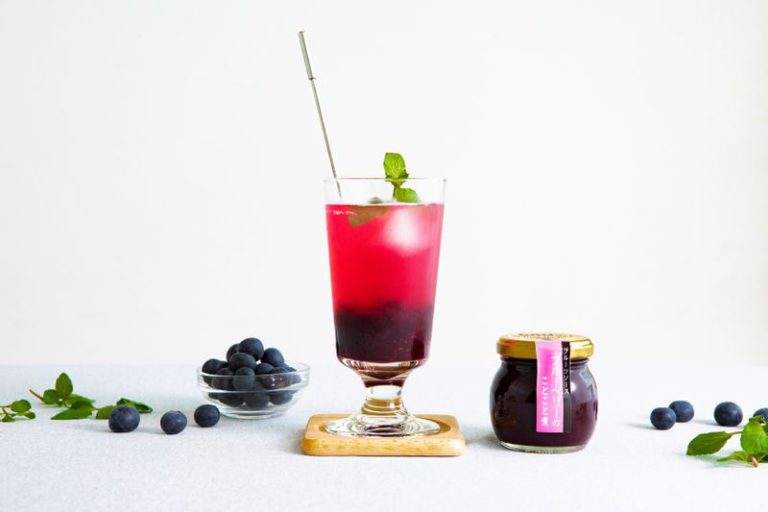
Hakuta recommends enjoying it as a blueberry soda. It is delicious when simply mixed with soda, and crush the berries while you drink it.
Nakasato suggests making a blueberry au lait by combining it with milk. You can add honey if it is not sweet enough.
Kochi Shoga Chai with aromatic home-grown ginger
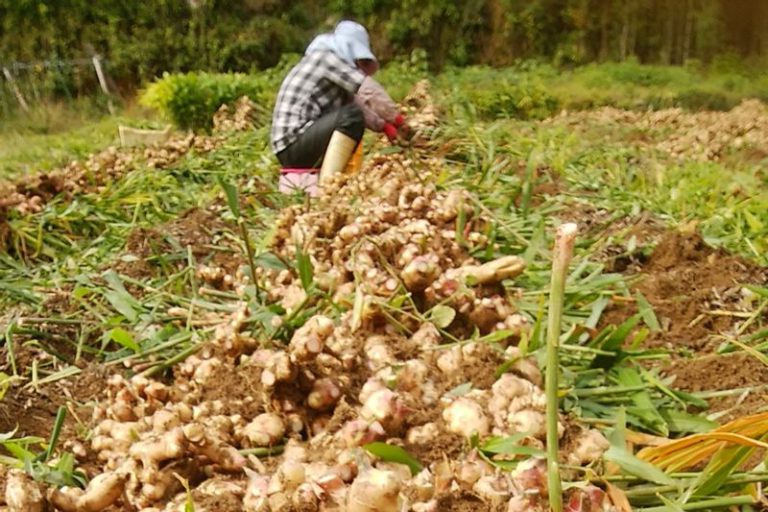
With a Southeast Asia-like climate, Kochi Prefecture, with high temperatures, humidity, and heavy rainfall, is known as one of the leading ginger-producing regions of Japan. Kochi Shoga Chai, made with plenty of ginger, is the proud work of Kaori Mizuta, who established Nosan Kobo Yashiro and operates a ginger farm in Ino, Agawa District, Kochi Prefecture.
Mizuta took on the challenge of creating the chai, “wanting many people to enjoy ginger more.” She asked for a recipe from a cookery expert she knew and kept making prototypes, tweaking the formula. She reached out to famous chai experts on social media for advice and finally made a product that won their seal of approval.
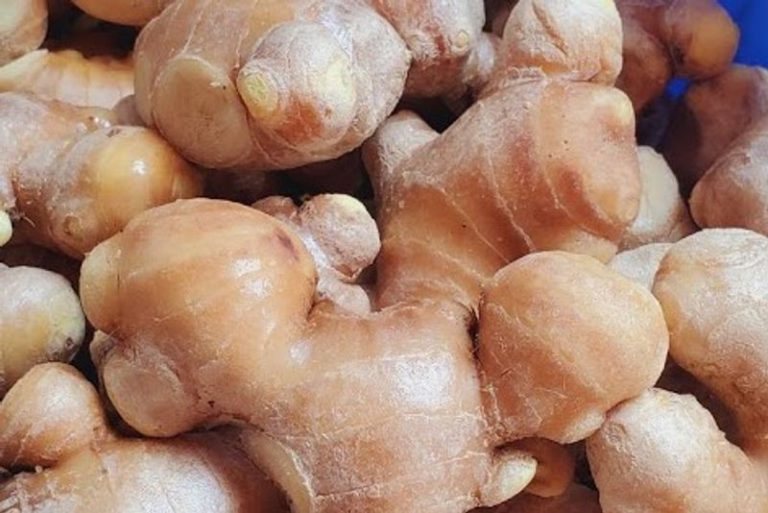
“The spices are simple: cinnamon, clove, cardamom and black pepper. Ginger is the most prominent,” says Mizuta.
She uses powdered ginger. Ginger that has been washed and cleaned of mud and damage is sterilized in boiling water, sliced and dried in a dehydrator. It is amazing to hear that 50 kilograms of ginger shrinks to just 4 kilograms when dried. Mizuta uses the rich and sweet Assam CTC to create the chai flavor that gives the sense of traveling through a foreign country she envisions. The ginger smells rich, but the brew is not spicy and is easy to drink.
“It’s not only tasty, but it’s also practical,” says Hakuta. Since it comes in tea bags, anyone can brew a delicious cup without the bother of measuring.
[How to enjoy]
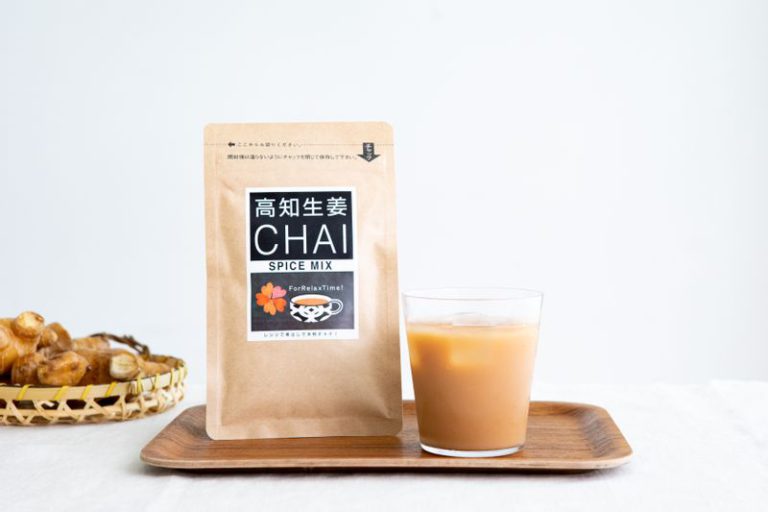
In hot weather, we recommend a refreshing iced chai. It can be brewed in the microwave, but it tastes much richer when brewed in a pot. Since adding milk releases its aroma, chill the brewed chai rapidly in ice and then in the refrigerator for a more delicious iced chai.
Mizuta recommends hot chai when your body feels cold due to air conditioning.
Mukashinagara no Amazake: a natural nutritious drink
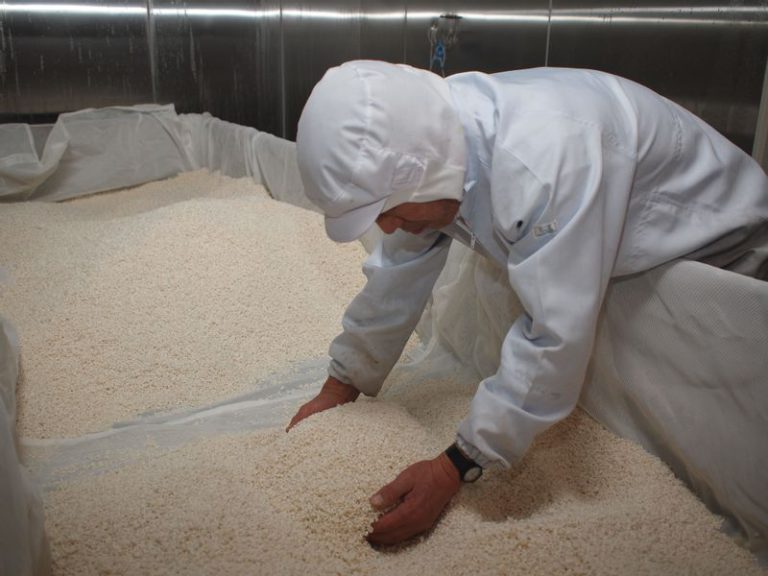
Regarded as the “intravenous drip you can drink,” amazake has been popular in recent years. The name “amazake” is a seasonal word for summer, and it is said that people have been drinking it since ancient times to receive nutritional support and gain relief from the summer heat. Mukashinagara no Amazake made by Taishoya Shoyuten, a soy sauce manufacturer in Shimane Prefecture, has been the company’s established product before amazake became a trend.
“Since Shimane Prefecture produces rice, we have an advanced food culture of using malted rice for making sake, amazake and Kinzanji miso,” says Hiromi Moriyama, a sales representative. Amazake is called amagai in Shimane Prefecture, and there is still a custom of preparing it in the kotatsu (heated table) at home.
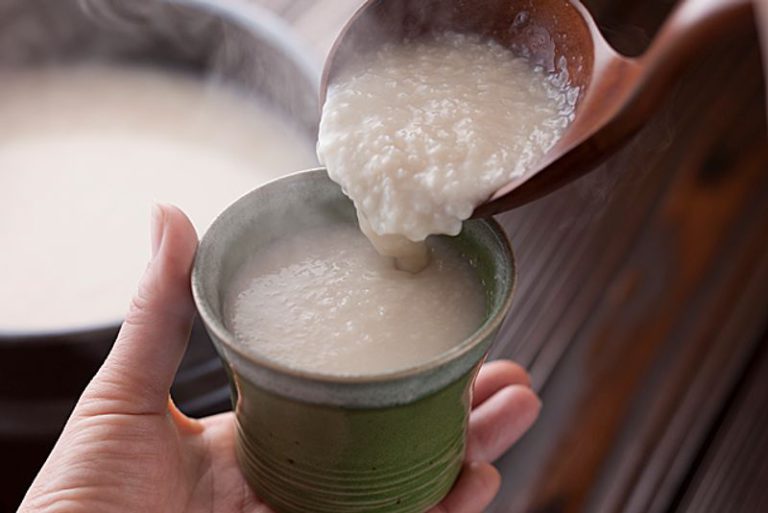
Mukashinagara no Amazake is made from rice locally grown in Yasugi and fresh malted rice made of that rice. Taishoya, which also produces miso, makes malted rice in-house. Fermentation is accelerated when malted rice is added to water and heated, and the enzymes give the amazake its mellow sweetness and umami. It contains no additives. Since the grains are mashed, it is “smooth and easy to drink in the summer,” says Hakuta. It can be enjoyed by everyone, young and old, and can also be used as a nutrient-packed sweetener to replace sugar in cooking and dessert-making.
Choose from three varieties that are offered: Amazake made with white rice, Genmai Amazake, and Kodaimai Amazake.
[How to enjoy]
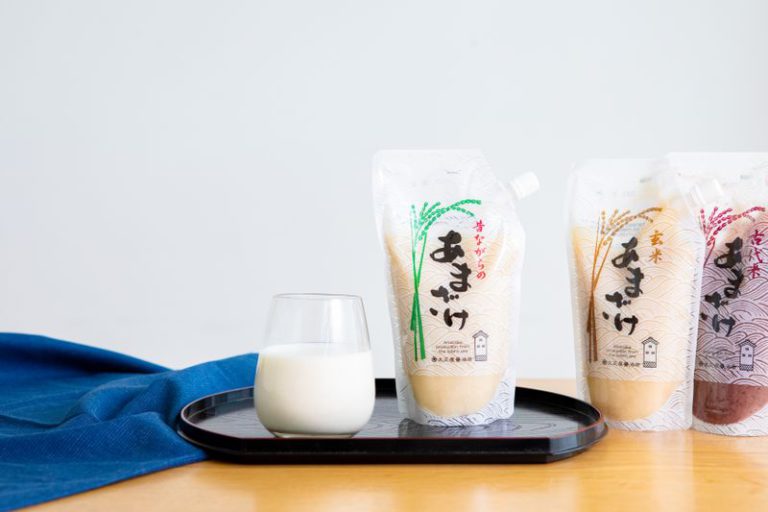
Hakuta recommends mixing it with creamy soy milk or cow’s milk. It is also delightful as sorbet; you can make the most of its smoothness by freezing it in its packaging.
Chocolate-lover Moriyama suggests amazake cocoa. The key point is to use unsweetened cocoa powder as amazake is naturally sweet.
Ringo Kamesu made from Kagoshima's black vinegar and apples
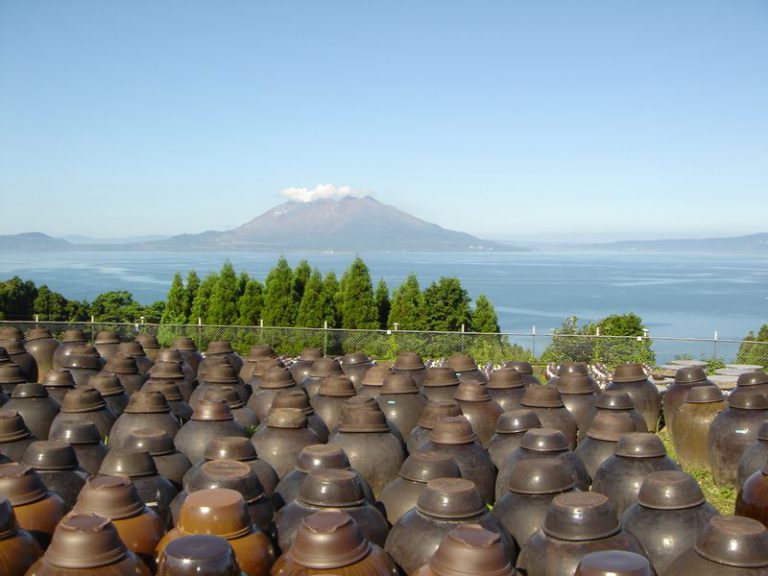
The Shigehisa Moriichi Su Jozojo, founded in 1805 in Kirishima, Kagoshima Prefecture, brews black vinegar by employing the world’s rarest kametsubo roten brewing method. Kagoshima’s unique brewing technique for making vinegar through the power of nature using Satsumayaki ware jars and such is something that can only be achieved due to the region’s climate.
“The temperate climate and mineral-rich groundwater filtering through Shirasu-Daichi, a broad pyroclastic plateau, are suitable for making vinegar. Black vinegar has been produced in Kagoshima Prefecture since the Edo period (1603–1867) because we had the skill for growing rice and making jars,” says the company’s president, Masashi Shigehisa.
Vinegar is prepared twice a year, from mid-March to July, and from September to November. Jars are filled with brown rice, malted rice and groundwater, and slowly fermented for a year to a year and a half to make black vinegar. Jars filled with vinegar lined up on the expansive site make for a unique sight.
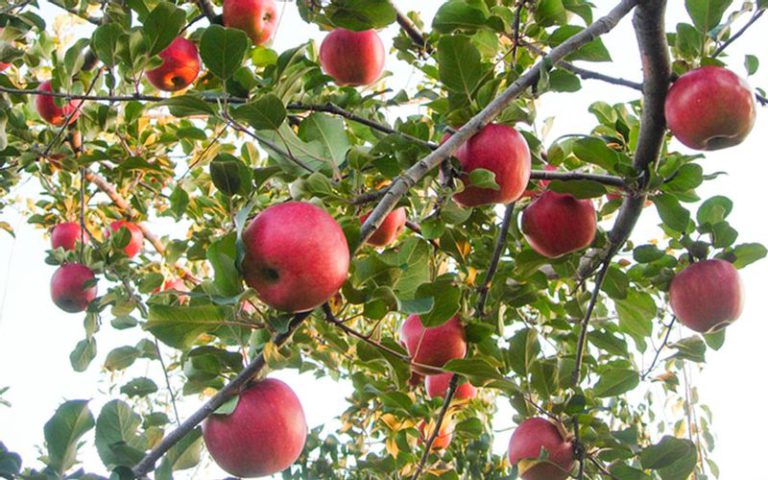
Ringo Kamesu was created by combining traditional black vinegar and apples organically grown by Shirai Farm in Nagano Prefecture. It is painstakingly made by blending apple-infused black vinegar with apple cider vinegar made by fermenting apples with malted rice and water.
“Since organically grown apples have damage and irregularities, we thought about ways of using them as an ingredient for fermenting vinegar. We were able to produce an excellent product as my commitment matched Mr. Shirai’s guiding principle of not using additives such as aroma chemicals,” says Shigehisa. Appetite-whetting vinegar is perfect for beating the summer heat.
[How to enjoy]
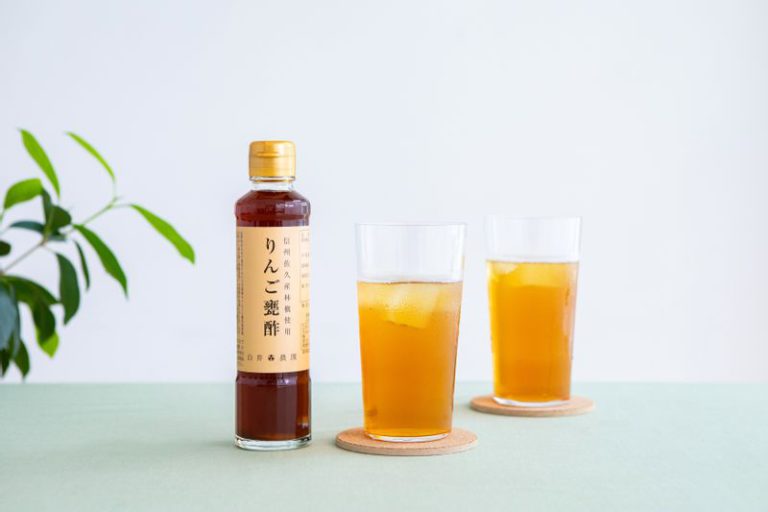
Hakuta recommends simply mixing it with soda or water. It is palatable even for those who do not enjoy sourness, as it has fruitiness.
If you love to drink, try a cocktail of Ringo Kamesu and shochu recommended by Shigehisa. As it is made of rice, the vinegar goes very well with rice shochu. Another suggestion is to combine it with beer for a fruity beer.
nicolina ecute Tokyo is hosting a Summer Drink Fair for a limited period, introducing the products covered in this article. The products are also available for purchase via nicolina’s online store, so please give them a try.

